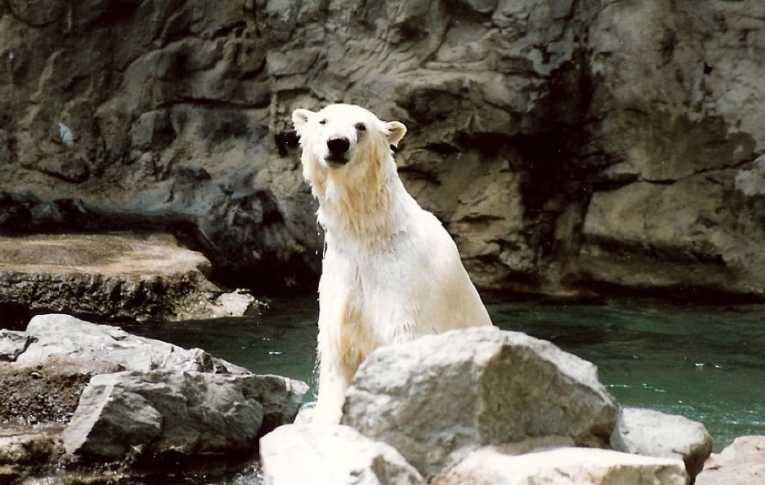Over the past few years, the polar bear has become something of a 'poster animal' for the environmental movement. Rightly or wrongly, campaigners have used the iconic mammal's plight as a wake-up call, warning government, businesses and individual consumers that, if they don't clean up their act, these bears, and many more species besides, will be lost forever. Certainly, the plight of the polar bear is very real and very serious.
Rising temperatures have been leading to the steady destruction of their habitat, with the melting of summer ice in particular causing bears to travel hundreds of miles in search of food, often in vain. Such a scenario led the US Government to list the animal as endangered three years ago, with the Montana-based Polar Bears International describing the outlook as "dire".
New research however, suggests that, while polar bears may be treading on thin ice, complete extinction can still be averted. Scientists working at several institutions across the United States, including the University of Washington, the National Science Foundation (NSF) and the US Geological Survey (USGS), adjusted the models they have previously used to predict the likely effects of climate on arctic wildlife populations, this time assuming a more-optimistic outlook in terms of anticipated carbon emission levels.
Significantly, they found that, while unchecked temperature increases would certainly lead to the loss of vast areas of Arctic ice over the next decade, particularly when the natural volatility of the region is taken into account, there is no 'tipping point' beyond which the situation can't be improved. That is, should greenhouse gas emissions start to fall over the coming years, while there would still be some rapid loss of ice over the short-to-medium-term future, looking further ahead, substantial retention of what ice there is left would follow. What's more, there could also be partial reversal of the early period of ice loss.
Publishing the findings of the study in the new edition of the journal Nature, the NSF's Eric DeWeaver explained that the research offers "a very promising, hopeful message", albeit one laced with a stark warning over what might happen should greenhouse gas emissions not start falling.
"Our current research provides strong evidence that it's not too late to save polar bears from extinction," the atmospheric scientists said. "Ultimately the outcome depends on how much greenhouse gas we add to the atmosphere in the future, not how much we've added until now."
The keyword here is, as the scientists say, 'mitigation' of carbon emissions, and as such polar bear defenders are likely to be buoyed by the landmark agreement reached recently in Cancun, with delegates from 193 nations signing up to the first truly global climate change agreement, to be overseen by the United Nations. However, it remains to be seen if this comes too late for the species, which is also being threatened by ongoing hunting and increases in other human-bear interactions.
Meanwhile, though this latest study does offer some hope for the animals, it concedes that extinction is still a distinct possibility in certain parts of the Arctic, where climate change may have already done enough damage to large areas uninhabitable. At the same time, a separate paper from the US National Oceanic and Atmospheric Administration (NOAA) warns that as formerly-isolated polar bears start wandering further and further in search of food, breeding with cousin species, such as grizzly bears, is likely to come more common in the years ahead, pushing them further towards extinction. Though there may be light at the end of the tunnel, the future of this iconic mammal is still far from certain.










